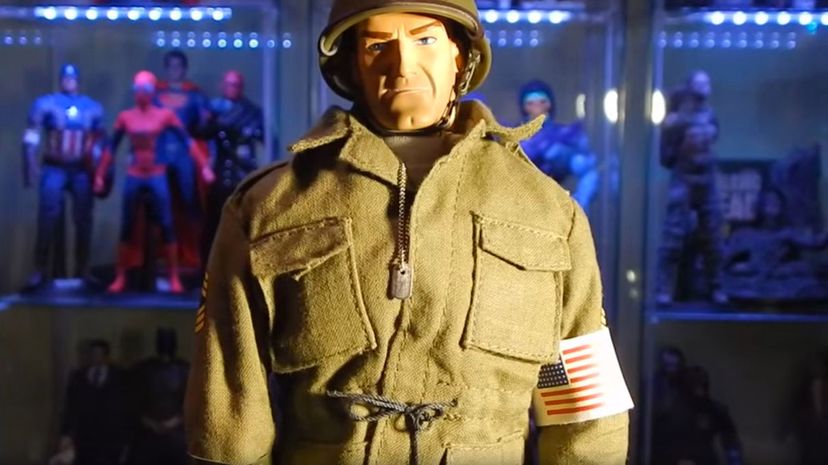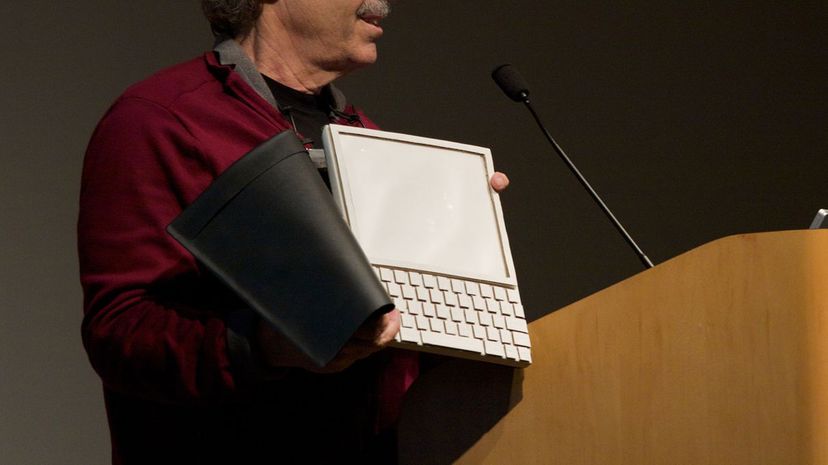
About This Quiz
The 1960s gave us so much to look back on. There was a civil rights movement, a race to the moon, a tragic presidential assassination, free love and much more. Overall, it was one of the most exciting decades of the 20th century, and we look back on that time as a masterpiece of American culture and change.Â
However, we also look back on that time as one of the most important decades when it came to innovation. The way we looked at the world was different, and the human race needed more elements for convenience, entertainment and travel. That's why this decade was so important. Not only did the space race give us a whole list of inventions to work with, toy companies were redefining how children played and we learned that we weren't just stuck with what was on the store shelves, because we could make whatever we needed, so long as we had the means and materials.Â
If you hold the 1960s in a special place in your heart (because you went through it or you love to study it), you might just ace this quiz. See if you have what it takes to identify these inventions that came out during that decade.

The cassette tape replaced the reel-to-reel system, which couldn't be made portable. This tape helped people listen to music or record and preserve memories. It paved the way for other sound recording systems.

When you think of fiber optics, you might think of those little designer lights that were popular in the 1990s. However, this invention is used on cables and various other technological items even today.

Before the portable calculator, people actually had to know math (well, at least a little bit). They were forced to do equations in their heads. It wasn't pretty, but it did its job properly, and that was all that mattered.
Advertisement

The lava lamp wasn't much - just a container with liquid and wax in it. As the lamp warmed the wax, it melted and created movement. This was considered the must-have item for teens in the '60s and '70s.

This guy has been through a lot over the past several decades. However, if you mess up, he lets you know with a frightening buzzing sound and a light that flashes. This game was pure genius for its time.

The Ken doll was released to give girls something more to work with when they were playing with their Barbies. You don't want your Barbie going around with that G.I. Joe doll? Here's a boyfriend for her.
Advertisement

We take advantage of a lot of innovative designs and inventions these days. In 1969, we were first introduced to the barcode scanner to help stores monitor inventory and price things properly.

In 1962, Barbie moved up in the world, and into her new place (with her parents, who didn't exist, obviously). Barbie's dream house was pretty big, but it was worth it because it had doors that really opened and a closet.

A Barrel of Monkeys was simply a barrel filled with plastic monkeys. If you could pull out a bunch of them at once (because they were tangled together), you won the game. It was created in 1961 and released to consumers in 1965.
Advertisement

The laser was perfected in 1960 by a man by the name of Theodore Maiman. It's been used for many different scientific discoveries and procedures, including scanning and medical equipment.

While many schools and gyms have these on hand today, they weren't invented until 1965. It really seems that the 1960s were the decade for understanding the heart and aiding in heart-related illnesses.

Who doesn't want to see a mini skirt and some thigh-high boots? Puritans, that's who. While you might not think that the miniskirt was an invention, it was a fashion-forward, bold move (and someone had to create it) and many thought it was a terrible idea.
Advertisement

While we often think of snowmobiles with a more sleek design, the functionality and the shape of this vehicle hasn't changed much since it was invented in the 1960s. They were used mainly for winter transportation.

ATM machines were first invented in 1969, and they were known as cash dispensers. These were a great way to get the money you needed, as fewer places accepted credit cards at the time.

The original G.I. Joe dolls (marketed as action figures, to appeal to men) gave boys a way to play war without hurting each other (they could hurt the dolls, of course). To tell if you have a real original, check its left thumb. Backward? You've got an original!
Advertisement

Rock 'Em Sock 'Em Robots was a pretty violent game for its time. It encouraged children to punch their opponents until their heads popped off ... well, how else are you supposed to know that you won?

While the patent for the first mouse was called the X-Y Position Indicator for a Display System, it had the right idea. The first mouse worked on a grid system and couldn't go diagonally.

When you wanted your child to learn how to cook, but you didn't want them to make a mess of your kitchen, you gave them an Easy-Bake Oven. This was a lightbulb that cooked food ... genius.
Advertisement

Pacemakers have saved lives for generations. They are devices that help keep your heart pumping at a proper pace by sending electrical currents and pulses through the heart muscles.

The Black & Decker Workmate was developed in the 1960s and is meant to help with various forms of carpentry. It is a general and all-purpose workbench for those who need something a little smaller as it's only about 3 feet tall.

If you've ever purchased (or wanted to purchase) transitions lenses for your glasses (you know, those lenses that get darker when you're in brighter environments), thank the man who invented photochromic glass.
Advertisement

In April of 1969, the first artificial heart was implanted in a person who was in need of a transplant. The artificial heart kept this man's blood pumping for three days, which was enough time to get him a donor heart.

Of course, the LED idea was first established as early as 1907, but it wasn't until 1962 that someone created a practical use for it. LED stands for Light Emitting Diode, and the first one was red.

In the 1960s, optical discs were created. This paved the way for such great products as laserdiscs, CDs, DVDs and (much later) Blurays. This invention changed entertainment as we know it.
Advertisement

It took a lot of juice, and only worked if you were within ten feet of a tower, but it was still a landmark invention. These pocket televisions came out around 1966, and they have only been getting better.

While the incandescent light bulb was invented in 1959, halogen lighting was a cooler way to get lighting without worrying about fires. The halogen lamp became one of the most significant lighting inventions of its time.

Yes, the computer language was basic, and it was called BASIC, which stands for Beginner's All-Purpose Symbolic Instruction Code. It was first written by John Kemeny and Tom Kurtzas.
Advertisement

This sedative was great for those in pain, those who couldn't sleep and those suffering from high anxiety (especially after returning home from war). It is now considered a controlled substance.

While it wasn't necessarily the computer boom that the 1980s gave us, the 1960s gave us some very important steps forward in the world of technology, including that of the DRAM, which is Dynamic Random Access Memory.

All right, it isn't necessarily considered the internet (which is said to have been in 1969), but the precursor to this magical field was called ARPANET, or Advanced Research Projects Agency Network.
Advertisement

In 1965, researchers at DuPont realized that they needed a stronger fiber. So they created Kevlar, which is an essential element in much of the armor worn by police officers and the military.

The UNIX operating system was an important way to connect people through telecommunications. The system was used from 1969 to 2008. It was a good run for a system created before the technology boom.

Vacuum fluorescent displays (or VFDs) were invented in Japan and created a way to create light without illuminating an entire room. They showed just what you were meant to see and didn't keep you up at night.
Advertisement

It looks a little bulky (at least when you compare it to the modern sketchers and computer devices that help us draw), but it was an innovative tool for those who needed to show and create computer graphics.

Hippy Sippy was a popular candy that was introduced in the 1960s. It looked like a syringe, which made its name a little telling. It wasn't necessarily the most child-friendly candy item, but then again, neither were candy cigarettes.

The vac-u-form was created in 1962 and hit the market in 1963. Children could make their own plastic toys and create whatever their imaginations could come up with ... as long as they had the mold. It was marketed to boys, mainly.
Advertisement

Before there were laptops, and before there were eReaders, there was the Dynabook. It came out in 1968 and was way ahead of its time. This little book was proposed as a personal computer for children.

Testing whether or not you're a match with someone takes a few things, including if there are sparks between you, and that is what the Love Tester by Nintendo did. It was marketed to young men and women.

The first video game console for consumer purchasing was released in 1972. However, inventors were trying to work the technology as early as 1966. Ralph Baer created several prototypes before the console was perfected.
Advertisement

The penny floater was a lightweight ball that gave you the ability to kick it far with minimal force. It was marked (somewhat) like a soccer ball (or football), and it gave children another reason to go outside.